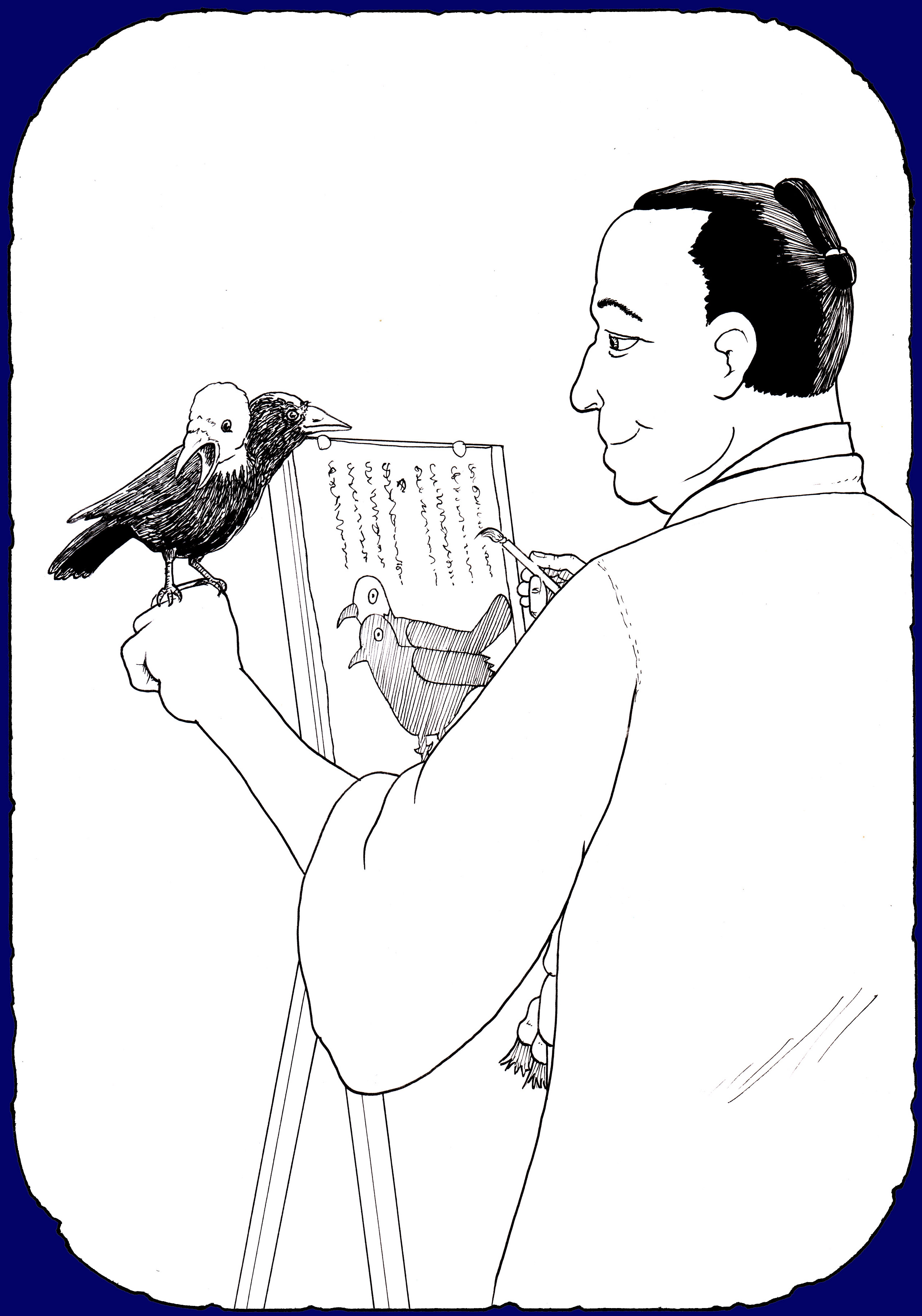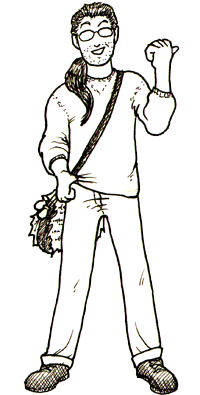Area(s) Reported: Shirayama, Ishikawa Prefecture, Japan
Date(s) Reported: December 1857
In 1857, the whole world was in the midst of a pandemic; cholera had spread from India to all corners of the Earth... even as far as Japan. At the time, a Japanese man named Kisaemon, who was the headman of the village of Ichikawamura (now Yamanashi City in Yamanashi Prefecture) wrote a journal about the events happening around his town and the surrounding areas which he called 暴瀉病流行日記 -- literally "Blood Illness Epidemic Diary," which kind of says it all, doesn't it? Kisaemon wrote in his journal that in December 1857 a two-headed crow -- which he included a drawing of -- had appeared in the town of Shirayama in Ishikawa Prefecture (located about 198 miles/319 kilometers from Yamanashi City), and that the strange animal spoke and predicted that by August or September of the following year that no less than 90% of the population of Japan was likely to die from the cholera epidemic. There was good news, however; if people gave attention to an image of the bird each morning and night, this would magically add protection against the rampant disease and allow citizens, and Japan itself, to survive... what a nice bird! There is no other known report or reference to this two-headed crow, which has since come to be called ヨゲンノトリ [Yogen No Tori]... which is literally "The Bird of Prophecy." Kisaemon's journal is now held in the collection of the Yamanashi Prefectural Museum. Yogen No Tori 2020 In December of 2019, a new illness started to spread across the world. The first confirmed cases of the 'Coronavirus' -- later labeled as 'Covid-19' -- were in China but, due to the disease's two-week incubation period, it soon spread to other countries in travelers who had no idea they were sick. By March 6, 2020, the coronavirus was a full-blown global pandemic; and people worldwide were scared and worried. Many countries adapted "social distancing" measures to slow the spread of the disease, meaning most people were encouraged to stay home and avoid public exposure as much as possible... and to help encourage this, most public events and gathering spots closed for the duration of the pandemic. The Yamanashi Prefectural Museum was one of the places that was closed to public access. On April 3, the museum posted a summary of Kisaemon's entry regarding the Yogen No Tori in the social media website Twitter for the amusement of their followers; and interest in the Bird of Prophecy flew! A later post at the museum's website stated that they had seen many new illustrations of the Yogen No Tori and were delighted because, with so much attention, the magic bird might be able to help stem the tide of the coronavirus pandemic... or at least distract people from their fear of it some. But I have a certain question I have to ask regarding Kisaemon's report of the odd bird: did it happen? Kisaemon was well aware of the dangers of the cholera pandemic, as he had received news of the happenings in Edo -- now Tokyo -- which had been hit before the disease came to Kisaemon's part of the country. Though Kisaemon reported that the Yogen No Tori was seen in December 1857, his report was written in August 1858... so after cholera had reached his village, and within the time frame of the bird's prophecy. Given that no other report of the supernatural bird can be found which, remember, Kisaemon claimed appeared in a town at a great distance from his village, it's a bit unclear how Kisaemon himself would have known about such an interesting -- and news worthy -- creature! It's also suspicious that the wise monster predicted a 90% death rate, which is amazingly harsh... In short, I wonder if Kisaemon made the story up to give people something to help them feel like they could control the course of the pandemic and to help stem the panic that would make handling the crisis near impossible. By claiming that the Yogen No Tori predicted a 90% death rate unless it was worshiped, it would be pretty likely that when far fewer people died, those who were worshiping the illustration would become convinced it's magic was working. This would engender a feeling of hope; and though based on a false belief, it would still be infinitely better than panic and depression!
See also: Amabiko [あまびこ] and the Amabie [アマビエ], The Baku [獏] | 






